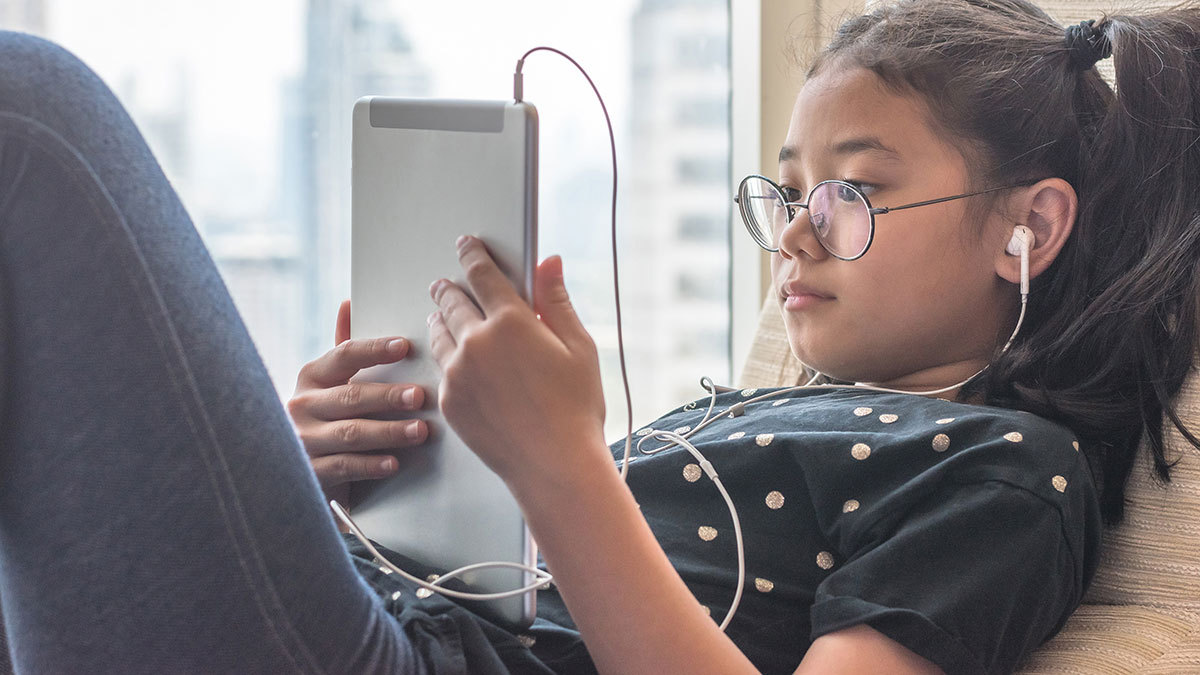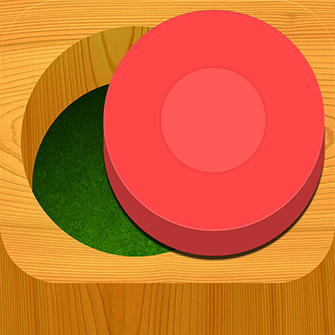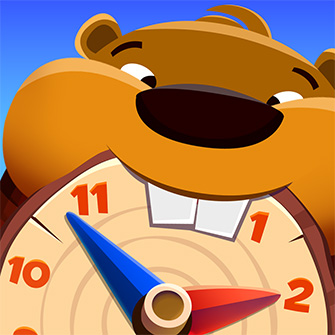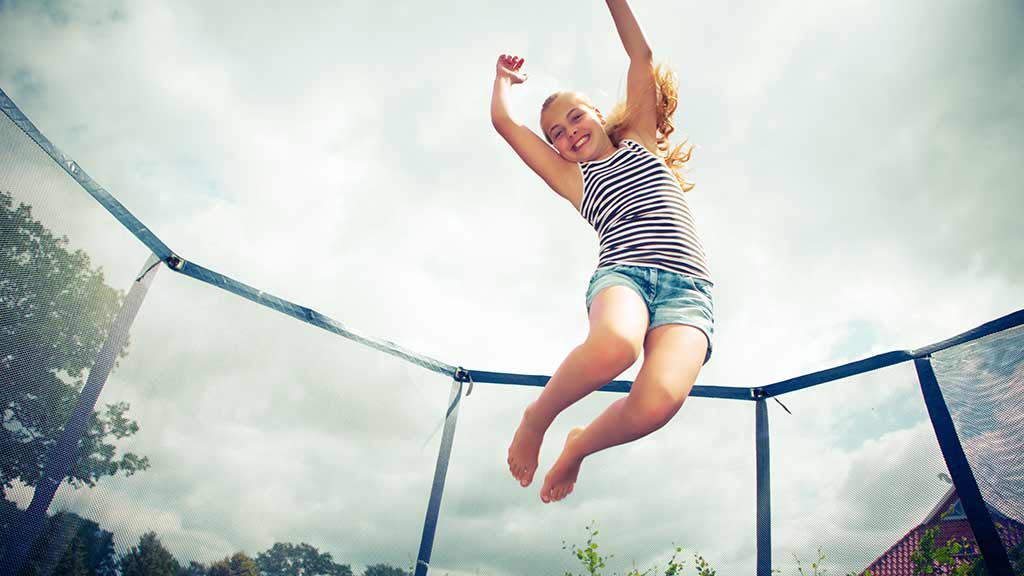Get our independent lab tests, expert reviews and honest advice.
Educational apps for kids

Sitting down to play with a smartphone or tablet has become an inevitable part of life for many kids, and with this has come an avalanche of apps aimed specifically at children.
On this page:
- Get them switched on
- Make it meaningful
- Watch out for in-app purchases
- Get social
- How to find good apps for kids
- Limiting screen time
While some apps leave no doubt they’re purely for entertainment, many – including more than a whopping 200,000 in the Apple Store alone – claim to have some educational value as well.
As it turns out, despite their educational claims, many are just digital candy. So if you’re a parent who looks for a bit of educational value for your child’s screen time, how do you sort the good apps from the bad?
We speak to the experts to find out the key ingredients that make an app educational, so you can keep your little ones learning.

Get them switched on
One of the greatest attractions of many apps is that a simple touch or swipe can produce a response on the screen. But Dr Jennifer Zosh, an associate professor in Human Development and Family Studies at Pennsylvania State University (Brandywine) in the US, says parents should pay attention to whether that’s all their child is doing.
“Think about how your child acts when using an app,” she says. “Is she sitting there watching with that vacant look in her eyes? Is she just swiping or tapping randomly? Or is she trying to plan her next move and thinking strategically? Does she get excited? Don’t be afraid to support those interactions with questions or new ideas.”
To learn, kids need to be ‘minds on’ – that is, mentally involved in what they’re doing.
Activities such as figuring out where a puzzle piece goes in Busy Shapes (IOS, $4.49) or tinkering with gears and pulleys in Crazy Gears (IOS, $4.49) involve active thinking, whereas passively tapping at animations on a screen doesn’t require a great deal of mental processing.
Parents should also think about apps and activities that follow their child’s interests.
“When children lead and adults support, learning can be maximised,” says Zosh. “If your child likes bugs [insects], discover bugs on a walk, take pictures of them, and look them up when you get home. If your child loves movies, think about having them work with you on creating a movie based on your family.
“The more we can empower children and get them excited to learn, the more learning I would expect to see.”
Keep it fun
There’s no point getting an educational app if your child won’t play it. And the more your child enjoys the game, the more they’ll actually benefit from it.
“If your child is in a playful environment and learning in an enjoyable way they’ll be engaged with the app and learn from it,” says Dr Nicola Yelland, professor of early childhood studies at the University of Melbourne.
Zosh agrees: “Don’t underestimate the power of joy. Research suggests that children learn more when they are engaged in activities that bring them joy or are surprising.If your child dreads an activity, it likely won’t pay off when it comes to learning.”
So make sure any apps you pick include games and challenges that your child actually enjoys, rather than looking for something that’s purely educational and, well, boring.
Limit distractions
Kids need to be engaged with what they’re doing, so keeping distractions to a minimum is important – both on-screen and off.
Some apps are their own worst nightmare when it comes to distractions, offering too many add-ons such as pop-up animations and sound effects that take a child’s attention away from the task at hand.
Virtual prizes can actually interfere with learning and the motivation to learn
Dr Jordy Kaufman, senior research fellow at Swinburne University of Technology
Another common distraction in apps designed for toddlers is fake applause or the awarding of virtual stickers. This may seem like an attractive feature to parents, but Dr Jordy Kaufman, a senior research fellow at Swinburne University of Technology, says giving out virtual prizes can actually interfere with learning and the motivation to learn.
“Not only can it distract children from reflecting on what they just learned, but it also unhelpfully suggests to children that learning is a chore that requires a reward,” he says.
Some children are more susceptible to distraction than others, so look for apps that at least allow you to switch off any add-ons if they do prove too much.

Make it meaningful
There are plenty of apps out there aimed at helping kids learn letters, numbers, and shapes, but once kids have grasped the basics, many of these apps become too simple and repetitive.
“True learning occurs when we take that lesson or idea outside of the original example and see it in our everyday lives,” Zosh says.
So instead of an app that asks a child to touch a triangle and then showers the child with applause, Zosh suggests looking for apps that help kids identify triangles in everyday situations they can relate to.
Parents can also think about ways to bring learning from an app into the real world – anything from counting the ingredients you are using to make dinner or finding shapes on your walk.
Check too if an app is just a random collection of games with no meaningful thread, as opposed to one that has a coherent story with missions or games that build upon one another.
In Love to Count by Pirate Trio (IOS, $5.99), for example, games such as splitting a pizza evenly for pirates to eat or balancing a set of weights on a scale teach kids how simple maths can be used in everyday life.
Similarly, in Tic Toc Time (IOS, $5.99) games that explore the sun’s position in the sky and the position of shadows on the ground help teach kids about time.
For older kids there’s Robot School (IOS, free), in which players hone their programming skills over various levels by helping a robot return to his crashed spaceship.
Watch out for in-app purchases
Don’t get caught out by apps that are free to download but require in-app purchases for the user to progress or access the best parts of the game.
These ‘freemium’ apps can lead your children to rack up hefty credit card bills while they play. For example, in 2011 we gave a Shonky Award to the popular game Smurfs’ Village, which charges up to $139.99 for an in-app purchase.
While having in-app purchases doesn’t necessarily mean an app is bad, the progress is often designed to be slow or incomplete unless the user makes a purchase. The game can also be disrupted by frequent purchase requests or external links to other games or apps.
Get social
Being social isn’t exactly what you think of when you see a child playing with a smartphone or tablet, but some apps can encourage social interaction, and this actually helps foster learning.
Allowing kids to either compete against each other or to work together on a single project are some of the ways apps can be designed to encourage social interaction.
Some apps can encourage social interaction, and this actually helps foster learning
For example, Treasure Hunt By Photos (IOS, $2.99) puts a modern twist on a traditional scavenger hunt, and can be played by multiple children as they search together for hidden items around the house.
And instead of a regular storybook app, a grandparent or other relative can read to your child remotely using Caribu (IOS & Android). The subscription-based app also lets families draw together, solve puzzles, cook, and even visit museums virtually in real time.
Getting parents onboard too
But all our experts agree that the best way to make playing with a screen a social experience is for parents to get involved.
“When an app is really engaging, children will often go out of their way to share this experience with a parent,” says Kaufman. “So sometimes parents don’t need to do that much but stop looking at their own tablets and watch and respond to their children’s bids for attention.”
Got game?
Got a few apps that don’t meet the criteria above? Don’t fret, as even these apps can provide a learning experience – so long as you’re willing to get involved.
“An app can be educational by design, but the way you interact with your child while they’re playing is what matters most,” says Dr Yelland.
While an app such as Angry Birds might seem like mind-numbing entertainment, Yelland says it can still be used to guide children towards thinking about trajectories, cause and effect, and decision-making.
And then there are games such as the hugely popular Minecraft, a highly engaging game that has no storyline, but which can inspire creativity and develop spatial awareness as kids design and build their own virtual worlds.
An app can be educational by design, but the way you interact with your child while they’re playing is what matters most
Dr Nicola Yelland, professor of early childhood studies at the University of Melbourne
Apps by app-development studio Toca Boca are also popular with children. Although many of these games aren’t necessarily designed to be educational, they can still encourage creativity and imaginative thinking.
“It’s important to have a conversation with your child about what they’re playing, what they enjoy about it, and what you think they could learn from it,” Yelland says.
“It’s the conversation that makes it educational, and you’ll be surprised by the amazing conversations you might have.”
How to find good apps for kids
Given the sheer number of apps aimed at children, finding a good one can be like finding a needle in a haystack. Here are a few tips to make it a little easier.
Ask for recommendations
If friends or family already have an app you’re considering, ask if you can have a short play to see if it’s suitable.
Try before you buy
Some apps give a free ‘lite’ version that may not offer all the features of the full version, but can still give you an idea of what it’s like before you pay.
Read user reviews
Check out online review sites such as Common Sense Media, which rates apps according to their level of engagement and learning approach, and gives an indication of the age-appropriateness of the content. Parents and children can also give their own reviews and feedback.
Research the developer’s other apps
If you find an app you like and that works well for your child, keep an eye out for more apps from the same developer.
CHOICE tips
Here, CHOICE parents share the apps their kids are currently loving.
“ABC Reading Eggs [subscription based] is hands down the best educational app I’ve ever used. It ‘quizzes’ your child at first to see what their level of reading is, then tailors the program so they’re learning the appropriate reading and phonics skills. More importantly, my son loves it.” – Marianna Longmire, commissioning editor
“Prodigy mixes maths and magic, literally. Kids create cute fantasy characters and complete maths questions to learn spells and defeat enemies. It gets harder as they progress and parents can even get email updates about their progress. ” – Jason Treuen, content specialist
“Some favourites in our house (eight-year-old) are BrainPOP, ABCya [subscription based and free with in-app purchases, respectively] and Prodigy.” – Rebecca Curran, Super Consumers Australia senior policy adviser.
“The Human Body by Tinybop is a hit in our house. And Epic is pretty good for access to thousands of books, but it is subscription based.” – Kate Bower, data analyst.
Limiting screen time
Many parents worry about the amount of screen time their kids get.
The current Department of Health guidelines recommend children aged five to 12 years spend no more than two hours a day in front of a screen (this doesn’t include time spent using computers and other screen-based activity for homework and study). Two- to five-year-olds should have a maximum of one hour per day, whereas children less than two years of age are recommended to have no screen time at all.
Associate Professor Michael Rosenberg from the University of Western Australia says that although these guidelines came about before the widespread adoption of smartphones and tablets, they still give parents the best guidance.
Current guidelines recommend children aged five to 12 years spend no more than two hours a day in front of a screen
“The guidelines were really established around watching television and playing video games,” Rosenberg says. “But even though some apps are interactive and might not be detrimental, they still take time away from kids doing other things and they are still sedentary in nature.”
Even so, it’s clear screen time is playing a different role in the lives of kids today than it did in the past.
Digital technology: friend or enemy of learning?
A new report from the Gonski Institute for Education has found that 43% of Australian educators believe digital technologies enhance teaching and learning activities.
However, 84% also say digital technologies are a growing distraction in the learning environment, and 78% believe that students’ ability to focus on educational tasks has decreased.
The report says children must be taught how to live a responsible, safe and healthy life in the digital world that surrounds them.
“This is not achieved by allocating blame or banning technologies (like smartphones), but by mindful education and working together on smarter sustainable solutions,” the report says.
Children and screen-time tips
The American Association of Paediatrics (AAP) has some tips for parents that go beyond the simple “switch it off” messaging of the past:
- set limits and encourage playtime
- be a good role model and limit your own screen time
- screen time shouldn’t always be alone time – play a video game or watch a show with your kids
- keep family mealtimes, social gatherings, and children’s bedrooms screen-free
- don’t use technology as an emotional pacifier
- warn children about the importance of privacy and the dangers of predators and ‘sexting’.
For more information and advice, visit the AAP website.






